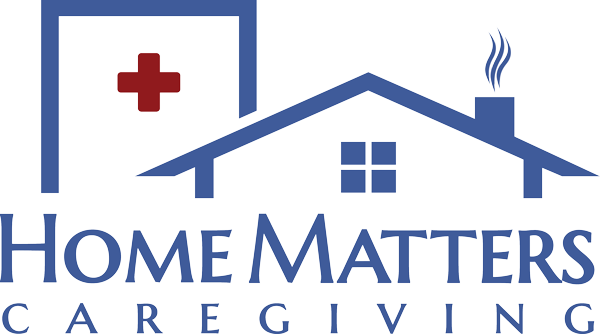Breaking Barriers: Accessible Caregiver Services for Every Need
In today's fast-paced world, the need for accessible caregiver services is more crucial than ever. Whether it's caring for an aging parent, a loved one with a disability, or a child with special needs, the demand for compassionate and reliable support continues to rise. Yet, many individuals and families face barriers when seeking out these essential services. From financial constraints to limited availability and inadequate resources, navigating the caregiving landscape can be overwhelming and discouraging. However, amidst these challenges, there is hope. Innovative solutions and initiatives are emerging to break down these barriers and ensure that everyone has access to the care they deserve. In this blog, we'll explore the importance of accessible caregiver services, the obstacles that exist, and the promising developments that are making care more inclusive and equitable for individuals and families across the globe. Join us as we delve into the journey of breaking barriers and fostering a world where caregiving is truly accessible for every need.
Multilingual Caregiver Services for Diverse Communities
Language should never be a barrier to accessing essential caregiver services. In multicultural and diverse communities, it is crucial to provide multilingual caregiver services that can effectively communicate and support individuals who may face language barriers. By breaking down these language barriers, caregivers can ensure that all individuals, regardless of their language proficiency, receive the care and support they need. In this blog post, we will explore the importance of multilingual caregiver services and how they promote inclusivity and accessibility for diverse communities.

The Significance of Multilingual Caregiver Services
In a globalized world, where communities are becoming increasingly diverse, multilingual caregiver services play a vital role in meeting the needs of individuals with limited English proficiency. In this blog post, we will discuss the importance of providing caregivers who can communicate effectively in multiple languages. Explore how multilingual caregivers bridge the language gap, enabling clear communication, understanding, and trust between caregivers and care recipients.
Cultural Sensitivity and Understanding
Language is deeply intertwined with culture, and multilingual caregivers bring cultural sensitivity and understanding to their caregiving roles. In this blog post, we will discuss how multilingual caregivers can navigate cultural nuances and customs, ensuring that care is provided in a respectful and culturally appropriate manner. Explore how this cultural sensitivity fosters trust, comfort, and a sense of belonging for care recipients from diverse backgrounds.
Enhancing Communication and Comprehension
Effective communication is essential in caregiving relationships. In this blog post, we will discuss how multilingual caregivers enhance communication and comprehension by speaking the native language of the care recipient. Explore how this direct communication eliminates misunderstandings, allows for detailed explanations, and ensures that care instructions are fully understood. Highlight the importance of clear communication in providing high-quality and person-centered care.
Building Trust and Rapport
Trust and rapport are fundamental in caregiver relationships. In this blog post, we will discuss how multilingual caregivers build trust and rapport with care recipients who may have limited English proficiency. Explore how speaking the care recipient's native language creates a sense of familiarity, comfort, and connection. Discuss how this linguistic bond contributes to a trusting and compassionate caregiving relationship.
Overcoming Language Barriers in Medical Settings
Language barriers can have serious consequences in medical settings. In this blog post, we will discuss how multilingual caregivers play a crucial role in overcoming language barriers in healthcare settings. Explore how they facilitate effective communication between care recipients, healthcare professionals, and other members of the care team. Highlight the importance of accurate translation and interpretation to ensure proper medical care and decision-making.
Understanding Different Caregiver Service Models: Tailoring Care to Individual Needs
When it comes to caregiving, one size does not fit all. Every individual has unique needs, preferences, and circumstances that require personalized care. Understanding the different caregiver service models is crucial in tailoring care to meet the specific requirements of each individual. In this blog post, we will explore various caregiver service models and how they can be customized to provide the best possible care for individuals with diverse needs.

- In-Home Care: In-home care is a popular caregiver service model that allows individuals to receive care in the comfort of their own homes. In this blog post, we will discuss the benefits of in-home care, such as maintaining independence, familiarity, and a sense of security. Explore how in-home caregivers can provide a range of services, including personal care, medication management, meal preparation, and companionship. Highlight the flexibility of in-home care in adapting to the specific needs and routines of the care recipient.
- Specialized Care for Disabilities: Individuals with disabilities often require specialized care tailored to their unique needs. In this blog post, we will discuss the importance of specialized caregivers who have expertise in providing care for individuals with disabilities. Explore how specialized caregivers can offer assistance with mobility, adaptive equipment, therapy exercises, and emotional support. Highlight the significance of understanding the specific challenges and abilities of individuals with disabilities to provide effective and compassionate care.
- Respite Care: Respite care provides temporary relief and support to primary caregivers. In this blog post, we will discuss the benefits of respite care for both caregivers and care recipients. Explore how respite care allows caregivers to take breaks, attend to their own well-being, and prevent burnout. Discuss how respite care can be customized to meet the unique needs of the care recipient, ensuring continuity of care and a positive caregiving experience for all involved.
- Live-In Care: Live-in care involves a caregiver residing with the care recipient on a full-time basis. In this blog post, we will discuss the advantages of live-in care, such as round-the-clock support, companionship, and peace of mind. Explore how live-in caregivers can provide assistance with daily activities, medication management, household chores, and emotional support. Highlight the personalized nature of live-in care, allowing caregivers to develop strong relationships and provide consistent care.
- Facility-Based Care: Facility-based care refers to caregiving services provided in assisted living facilities or nursing homes. In this blog post, we will discuss the benefits of facility-based care, such as access to specialized medical services, social activities, and a supportive community. Explore how facility-based caregivers work collaboratively with healthcare professionals to ensure comprehensive care for residents. Discuss the importance of choosing the right facility that aligns with the care recipient's needs and preferences.
Conclusion
Home Matters Caregiving, we are dedicated to breaking barriers and ensuring accessible caregiver services for every need. With our commitment to excellence and compassion, individuals and families in Pittsburgh, PA, and beyond can rely on us for comprehensive support and assistance. Through our dedicated hotline at (800) 298-5140, we strive to make our services readily available and easily accessible, empowering clients to receive the care and attention they deserve. Our mission remains unwavering as we continue to prioritize inclusivity and quality care for all, fostering a community where everyone feels supported and valued.


